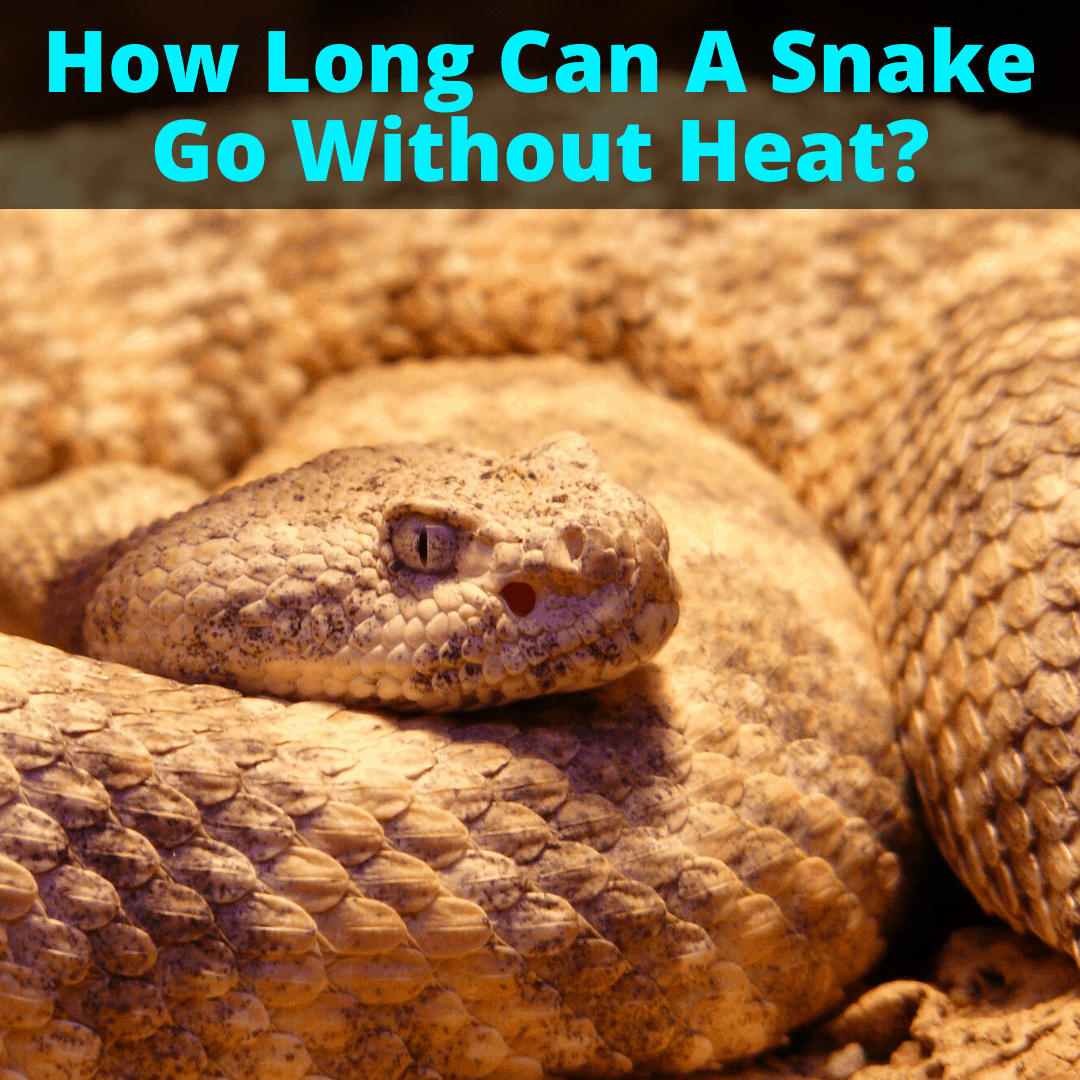
But no snakes are able to produce body heat.
That means that snakes in captivity rely on a constant supply of artificial heat and light.
And it is up to you to supply that heat and light.
But what if something happens and the snake has to go without heat for a while?
How long will it survive?
Let’s examine that question in detail, so that you can be sure you never leave your snake out in the cold. Literally or metaphorically.
Table of Contents
How Long Can A Snake Go Without Heat?
Snakes are reptiles and all reptiles, which includes crocodiles, turtles, and lizards, are cold-blooded (also known as ectotherms). This means they are animals they don’t produce their own body heat.
As a result, snakes rely on external sources of heat to support their bodily functions.
This has the benefit that they need less energy to survive and can go for long periods without food. But it also means they need some kind of source of heat, like the sun.
Snakes Also Need To Cool Off
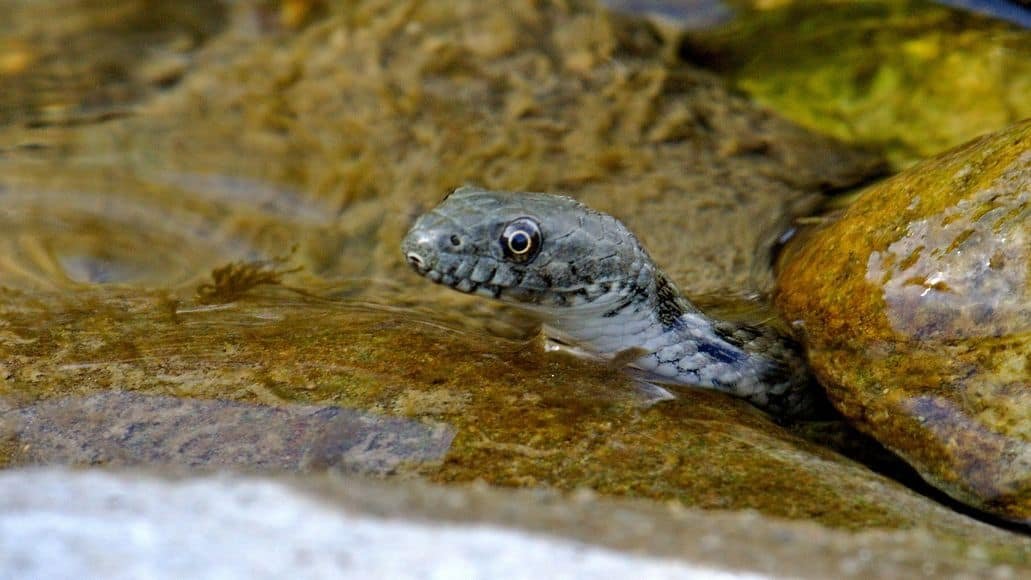
Even though snakes are cold-blooded, they don’t only require heat. They also require cooling down.
In the wild or in captivity, snakes require both heat and cool conditions to allow them to warm up and cool down as needed.
They like to slither out onto a warm rock and bask in the sunshine, and then retreat into a cave or even under the sand to cool down. This is how they keep their temperature within the ideal range.
Winter Heralds A Slower Metabolism
When winter approaches, some birds and animals move away to seek out warmer areas. A snake can’t fly to another country so it will go into hibernation.
The snake becomes less active during cold weather. It is actually known as brumation rather than hibernation.
It’s a slowing down of the snake’s metabolism. The snake is lethargic and doesn’t move around much, but it does not enter a prolonged state of sleep like a hibernating animal.
Cold-blooded creatures like this spend the winter inactive as they have no means to keep warm. They increase their food intake before brumation occurs to tide them over this inactive period.
A snake that is kept as a pet and placed into a cold enclosure can quickly lose body weight and become cold. They search for a basking spot or they try to retreat into a ‘cave’.
If you don’t provide them with either, they rapidly lose body heat. They become colder and colder and will eventually die.
A snake that thrives in hot desert temperatures or a snake that loves humid, steamy jungles will die quickly in cool temperatures.
The Sidewinder Loves Hot Desert Conditions
One snake that wouldn’t do well in the cold is the sidewinder snake. This is a venomous snake native to Arizona and other states in the southwestern United States and in northwestern Mexico.
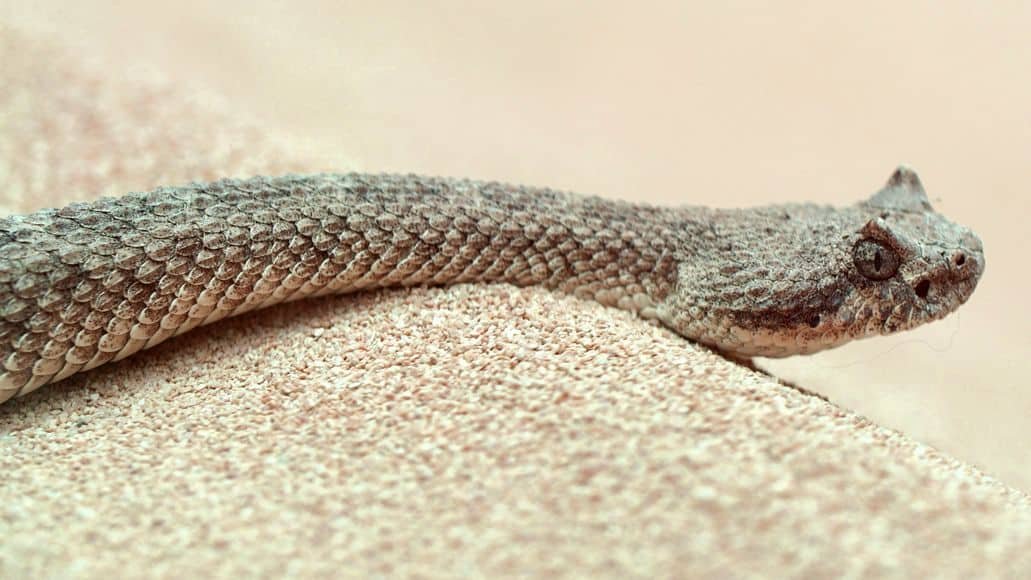
They slither diagonally, moving quickly over the desert sand. But even these snakes can overheat. They have learned to ‘adapt or die’.
Their unusual way of moving minimizes contact with the hot ground, to keep them from heating up as much as possible.
And if they find that the temperature is getting particularly high during the day, they change their schedule to become more nocturnal. In this way, they avoid the heat of the day and wait it out in a cool spot.
Interesting Facts About Cold-Blooded Snakes
- Snakes don’t generate body heat and they, therefore, don’t need to eat as much food as mammals.
- A snake’s body temperature changes to the temperature of its surroundings. This means that they can’t survive in places where it is freezing, so you won’t find snakes in Antarctica.
- An advantage of being cold-blooded is that these serpents snakes don’t have as much of an issue with bacteria. Bacteria thrive in warmth. Because snakes are only sometimes warm, bacteria have a hard time staying alive and thriving.
- Because snakes rely on the sun’s heat, they are more sluggish in the morning and evening. These are times that make them an easier target for predators.
- If you keep a snake as a pet, you will need to provide the snake with a source of warmth as well as a cooler area. This allows it to regulate its temperature. Failing to do this can cause your snake pet to become stressed, depressed and ill. You will need to outfit the enclosure with snake accessories like heat lamps and heat mats. Aiicioo makes excellent pet products and their ceramic heat lamp creates a natural sun-like heat with no light. Infrared light also promotes healthy scales and skin.
- You will need to monitor the temperature in the enclosure using a special snake enclosure thermometer.
Do You Turn Snakes’ Heat Lamps Off At Night?
No, with temperatures dropping, heat lamps should be kept on at night. When bright lights are off, there still needs to be night-time heat, but without lights distracting them. Heat bulbs come in a host of different wattages for proper night time temperatures.
A Cold Snake Is A Sick Snake
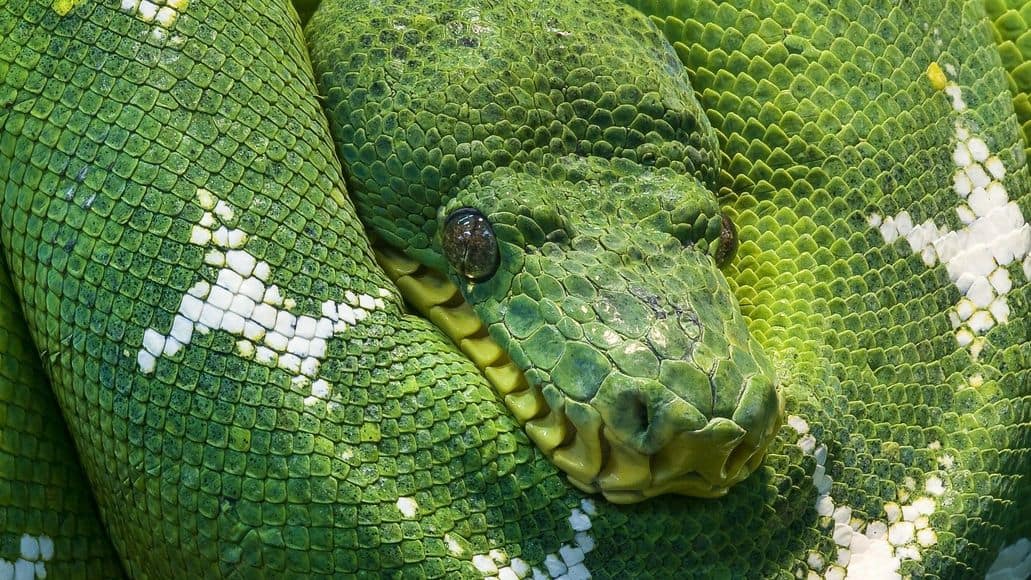
If a snake lived in a region where there was very little sun, it wouldn’t do well. Snakes can’t produce their own body heat, but heat is imperative for their digestion.
If a snake becomes too cold, it isn’t able to metabolize its food properly, which means it can’t perform other bodily functions.
If a snake is forced to live in an area where there are constantly low temperatures, or if the snake was kept in an enclosure where it was heat-deprived, it would be miserable and sick.
It can ‘catch a cold’ just like a human and respiratory infections can be fatal for a snake.
Temperatures Affect Behavior
Snakes are able to survive different temperatures, but it all depends on the snake species. Here are just a few temperature preferences of different snake species.
| Species | Ambient Temperature | Basking Spot Temperature |
| Boa Constrictor | 75°F | 90°F |
| Corn Snake | 75°F | 85°F |
| Ball Python | 80°F | 90°F |
Most snakes prefer a temperature range between 70° F and 95° F. For a Python, for instance, the daytime temperature of the enclosure should be between 83 and 87° F.
To keep your snake comfortable at night, the temperature can be between 73 and 78° F. Be vigilant with your snake. High temperatures can be just as bad for your snake as freezing temperatures.
The activity of snakes depends on temperature. In Australia, for instance, where the weather is getting warmer as a result of climate change, snakes are becoming more active.
Other countries are also seeing the activity levels of snakes increasing. Snakes that were previously unseen, are now being found in homes and gardens.
This has unfortunately led to more snakes being killed, usually out of fear. But killing them is not necessary.
Speak to any snake expert and you will find that a snake on your property is no reason for alarm. They mean you no harm.
Snakes should never be killed. Instead, call a snake expert to remove them. They play a vital role in the planet’s ecosystem after all.
Temperatures Play A Large Role In A Snakes Behavior
Snakes go into hiding when temperatures plummet and they seek out cooler places when temperatures rise. The amount of food consumed by snakes depends on the temperature, too.
Temperature also has a close connection to the susceptibility to disease. Death rates among snakes often increase after a particularly bad cold spell. Dead snakes found after a cold period usually show symptoms of lung problems.
Snakes are robust and they can do fine in cold weather – but only for a while. A snake that thrives in dry, hot summers won’t do well in wintry, damp conditions.
Hypothermia
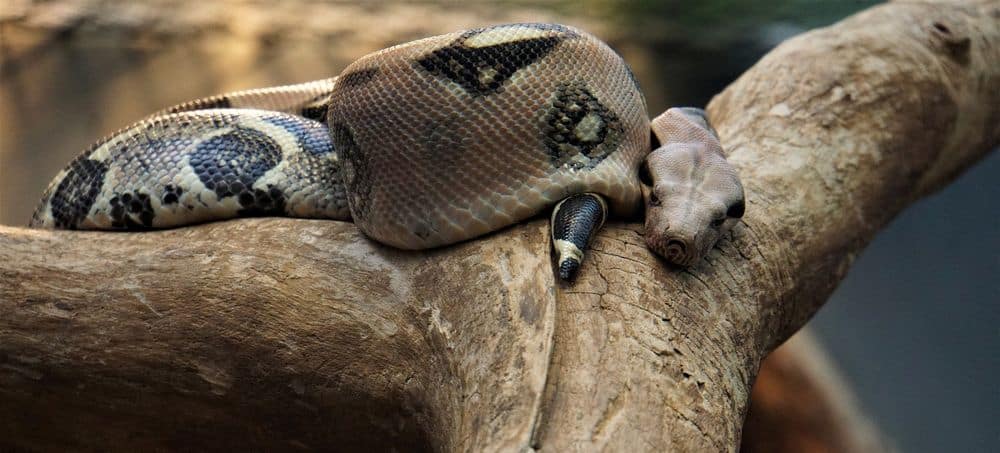
Just as we can get hypothermia when we’re out in the cold and our body temperature drops too low, a snake can become hypothermic too.
A snake that is kept in a cold, damp enclosure, can suffer from respiratory infections or battle with scale rot.
This disease can come about because of overly moist, cold enclosures, and because the snake’s immune system is compromised.
If you think that your snake is too cold, start by allowing it to warm up in some warm water. Put a large bowl of warm water into the enclosure and allow your snake to bathe in it for 20 minutes or so.
Check out heating accessories such as heat pads, heat tape or heating globes. And make sure they are regulated with a thermostat. Check it regularly.
A Weakened Immune System
A snake falls prey to illness because without warmth, the immune system is weakened. The weakened immune system encourages disease, whether a snake is out in the wild or in captivity.
Some people fail to recognize the early symptoms of a cold snake, and only realize something is wrong when it twists and turns and becomes jerky. At this stage, it may be too late for the snake to warm up.
Early symptoms to look for in hypothermic snakes are that they become less active and they stop eating and drinking. They become dehydrated and lose weight. Many snakes stop shedding too.
What does Your Pet Snake Prefer?
With a captive snake, you should immediately test the temperature within the enclosure and then compare this to what your snake species prefers.
The speed at which a snake becomes hypothermic depends on how low the temperature is. If the temperature is far below the required range, snakes can quickly succumb to hypothermia.
Death Can Be Swift For A Cold Snake
If you leave a snake in freezing temperatures without providing it with any kind of warmth, it can be dead by the next morning.
If you have unwittingly allowed your snake to become too cold and you are concerned about its health, have it checked out by a veterinarian.
It may be that your snake has deteriorated to such an extent that it will require antibiotics and fluids.
To avoid hypothermia with a captive snake, do research on snakes and the environmental conditions they require to do well.
Reptile pet owners need to maintain a constant temperature in the enclosure, regardless of the seasons. It is only when a snake has an enclosure that replicates its natural habitat that it can thrive.
Brendan says
My snake has survived in almost frozen conditions. They are cold blooded
Henry van Staden says
That is interesting, what type of snake is it?
Alexia says
I just got my snake and the only heat source I gave is the lamp, the temperature is at 60, I’m going tomorrow to get the heating pad, I’m scared my snake won’t survive what can I do?
Gordon Wilson says
It really depends a lot on the type of snake. But it’s the next morning anyway. Did it survive the night?
Brianna says
My snake is a ball python and her six months is up,and she needs new light bulbs,but my mom is refusing to buy them.She’s gone fifteen days without proper bulbs.Is there anything I can do? I’m so worried
Gold says
My baby moma don’t like snaked so she wont let me keep on in the house so question is name my snake live in my car over night in 35 degree temps..ONLY AT NIGHT THO
Gordon Wilson says
No, don’t do this.
Stacie Taylor says
We’ve got one of our snakes under the floorboards (Winter – now in UK) Heating on constantly for her. But she just isn’t coming back out – even with scent of mice
Any ideas to get her out. Tried the bottle/mouse trick.
It’s been 10 days and we can still hear her down there.
Gordon Wilson says
She’s too comfortable. Turn off the heating under the floorboards and provide a warm spot outside, to lure her out. She’ll come out when she gets cold.